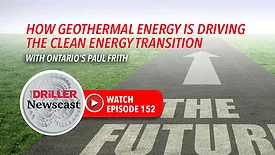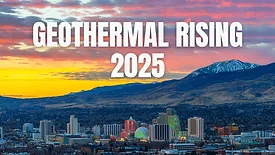Geothermal
From freeze wells to first beers, one teenager’s unforgettable days in the citrus groves of Florida.
Read More
America’s Hottest Geothermal Plant to Tap Volcano Power by 2026
Engineers working in central Oregon are tapping into the earth’s natural heat beneath the Newberry National Volcanic Monument
Read More
From Garbage Truck to Glory: Building the Big Rig
Highlights the unlikely transformation and ambition behind the rig build.
Read More
Industry Tribute: Donovan Gordon to Be Honored in Retirement Webinar
This is more than a farewell - it’s a well-earned standing ovation.
Read More
Episode 153 – The Driller Newscast
Boots on the Ground to Loops in the Ground: A Veteran's Geothermal Career
Read MoreEpisode 152 – The Driller Newscast
How Geothermal Energy is Driving the Clean Energy Transition - with Ontario's Paul Frith
Read MoreHula Lakeside: How Geothermal Energy Is Redefining Workspaces in Vermont
From an Old Factory to a Very Green Future
Read More
Geothermal Rising 2025: The Industry Comes Home to Reno
The geothermal world is coming back to Reno.
Read More
Dig deeper into the drilling and water supply industry!
Build your knowledge with The Driller, covering the people, equipment and technologies across drilling markets.
SIGN UP NOWCopyright ©2025. All Rights Reserved BNP Media.
Design, CMS, Hosting & Web Development :: ePublishing








.webp?height=168&t=1762750161&width=275)
.webp?height=168&t=1762957903&width=275)


